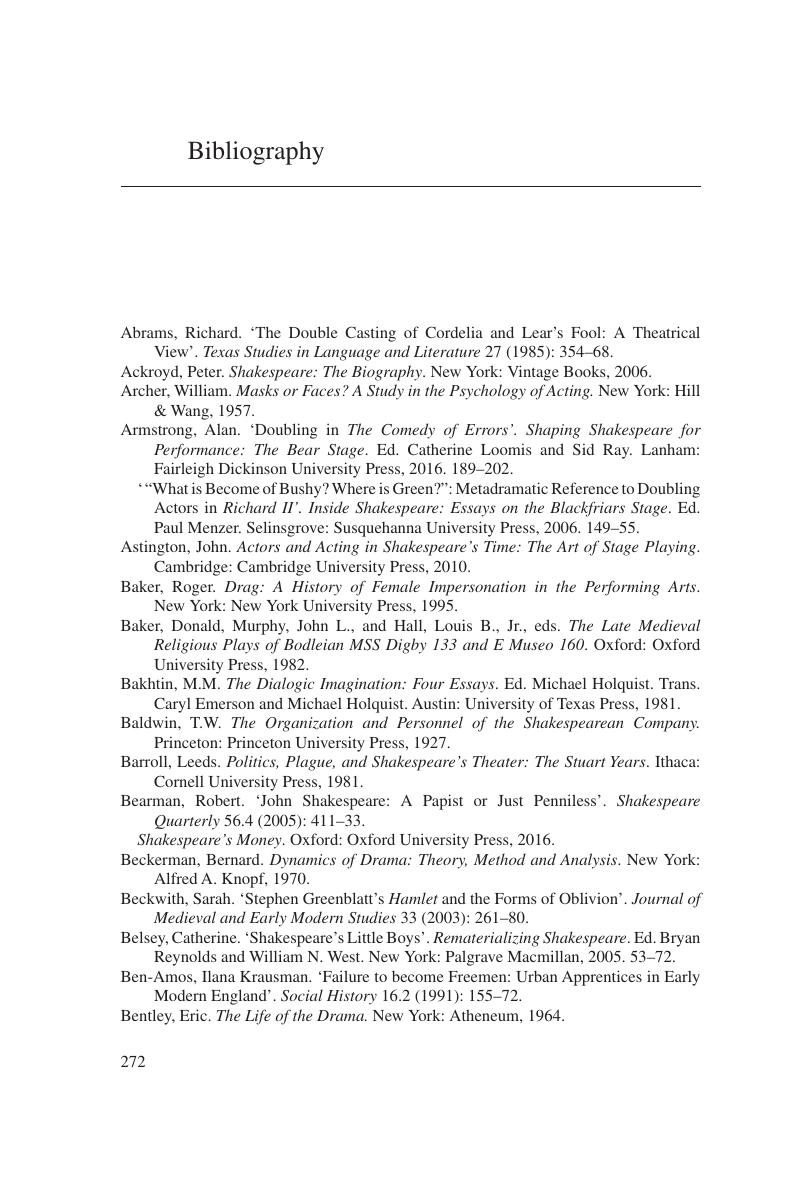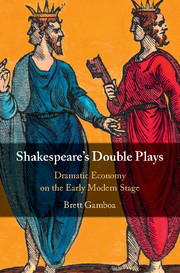Book contents
- Shakespeare’s Double Plays
- Shakespeare’s Double Plays
- Copyright page
- Contents
- Figures
- Tables
- Acknowledgements
- Introduction
- 1 ‘Improbable Fictions’
- 2 Versatility and Verisimilitude on Sixteenth-Century Stages
- 3 Doubling in The Winter’s Tale
- 4 Dramaturgical Directives and Shakespeare’s Cast Size
- 5 Doubling in A Midsummer Night’s Dream and Romeo and Juliet
- 6 ‘What, are they children?’
- 7 Doubling in Twelfth Night and Othello
- Epilogue: Ragozine and Shakespearean Substitution
- Appendix: Doubling Roles in Shakespeare’s Plays
- Bibliography
- Index
- References
Bibliography
Published online by Cambridge University Press: 26 April 2018
- Shakespeare’s Double Plays
- Shakespeare’s Double Plays
- Copyright page
- Contents
- Figures
- Tables
- Acknowledgements
- Introduction
- 1 ‘Improbable Fictions’
- 2 Versatility and Verisimilitude on Sixteenth-Century Stages
- 3 Doubling in The Winter’s Tale
- 4 Dramaturgical Directives and Shakespeare’s Cast Size
- 5 Doubling in A Midsummer Night’s Dream and Romeo and Juliet
- 6 ‘What, are they children?’
- 7 Doubling in Twelfth Night and Othello
- Epilogue: Ragozine and Shakespearean Substitution
- Appendix: Doubling Roles in Shakespeare’s Plays
- Bibliography
- Index
- References
Summary

- Type
- Chapter
- Information
- Shakespeare's Double PlaysDramatic Economy on the Early Modern Stage, pp. 272 - 283Publisher: Cambridge University PressPrint publication year: 2018



